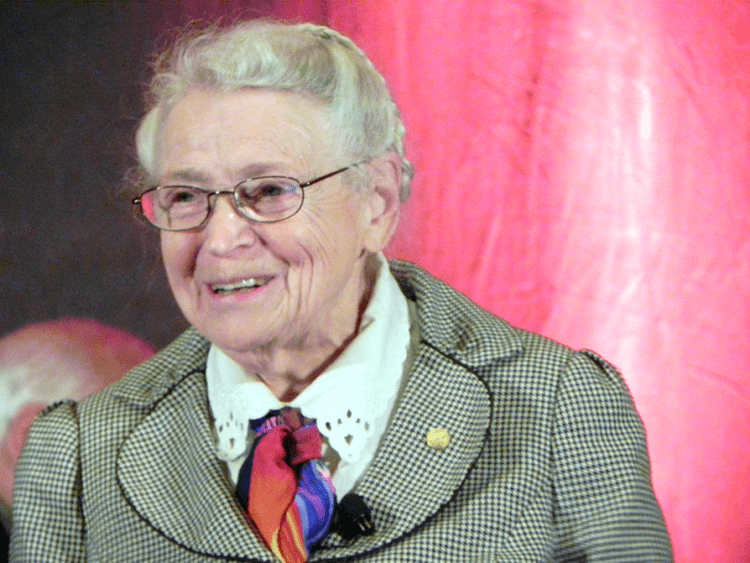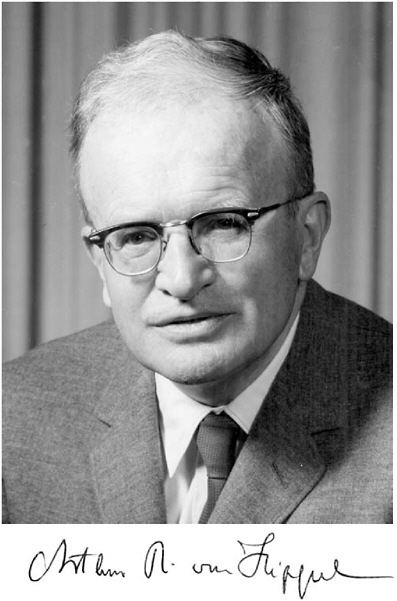Citizenship American Name Arthur von Children Eric von Hippel Books Dielects and Waves | Fields Physicist Nationality German Role Physicist | |
 | ||
Born November 19, 1898Rostock, Germany ( 1898-11-19 ) Alma mater University of Gottingen Similar People Eric von Hippel, James Franck, Gustav Ludwig Hertz | ||
Education University of Gottingen | ||
Arthur Robert von Hippel (November 19, 1898 – December 31, 2003) was a German American materials scientist and physicist. Von Hippel was a pioneer in the study of dielectrics, ferromagnetic and ferroelectric materials, and semiconductors and was a codeveloper of radar during World War II.
Contents

Early life
Von Hippel was born in Rostock, Mecklenburg-Schwerin, on November 19, 1898. He graduated in physics from the University of Göttingen, where he was taught by many eminent figures of mathematics and physics of the time, including David Hilbert, Richard Courant, Peter Debye, Robert Pohl, Max Born, Gustav Hertz, and Nobel Prize winner James Franck (who was his thesis supervisor). Von Hippel received his Ph.D. in physics in 1924, and in 1930 married Franck's daughter, Dagmar.
Career and achievements
In 1933, with the ascension of Nazis to power in Germany, von Hippel decided to move to another country, mainly because his wife was Jewish, but due also to his political stance against the new regime. In 1934 he was able to secure a position with the University at Istanbul, Turkey, then spent a year in Denmark, working at the Niels Bohr Institute in Copenhagen. In 1936, accepting an invitation by Karl Compton, von Hippel moved again, this time to the U.S., and became an assistant professor at the Massachusetts Institute of Technology. During this time, he studied the properties and behavior of high voltage gas discharges, using positive and negative Lichtenberg figures recorded on photographic film. In 1940 he founded the Laboratory for Insulation Research, which soon became one of the most important research and education centers in this area in the world.
Together with MIT's Radiation Lab, von Hippel and his collaborators helped to develop radar technology during the war. He was awarded the President's Certificate of Merit in 1948 by U.S. President Harry Truman. He became famous also for his discovery of ferroelectric and piezoelectric properties of barium titanate (BaTiO3).
During the war the results on dielectrics obtained by the Laboratory for Insulation Research were classified information. After the war these results were prepared for publication. In 1954 von Hippel published Dielectrics and Waves and assembled Dielectric Materials and Applications with 22 collaborators. The Laboratory for Insulation Research also published several technical reports.
Arthur introduced his ideas of designing materials with properties prescribed for the purpose at hand, or molecular engineering, in 1956 in an article that discussed impurities and dislocations in materials, and the use of imperfections. He edited the volume Molecular Science and Molecular Engineering (1959).
The premier award of the Materials Research Society is named in his honor.
Later life
He died at 105 years of age, in 2003. His son, Frank N. von Hippel was a theoretical physicist and professor of Public Policy at Princeton University. Another son, Eric von Hippel, is a professor at the MIT Sloan School of Management who has done pioneering research on user innovation. His uncle, Eugen von Hippel, described the ophthalmic hemangiomata that are part of von Hippel-Lindau disease, which bears his name.
